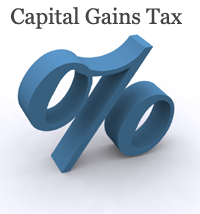A capital gain is the amount by which proceeds from the sale of an asset exceeds its original cost base. Capital Gains Tax (CGT) is the tax payable on this increase in value between the date of purchase and date of sale.
For investments purchased before 1985
The benefits of negative gearing and investment were clearer. Provided you could fund the negative cashflow while renting out the property, the profit on the eventual sale was completely tax-free. Tax losses were recouped by the tax-free profits.
For investments purchased after 1985
Capital gains tax (CGT) was introduced in 1985. This meant that the recouped profits through capital gains would be taxable. Thus the tax benefits of negative gearing diminished. Existence of CGT means that all profits are now taxed one way or another.
Get advice about your capital gains tax issue by calling 02 9776 8866 or make a free online enquiry by clicking here. No Obligation! Hassle Free!
Advantages of CGT
However, the advantages of negative gearing still exists as CGT is preferable over income tax. This is because of 2 reasons:
- No CGT is payable until you realise the gain
In the above example, you would not pay CGT on the $300,000 capital gain until the property is sold in the 10th year. On the other hand if you did not negatively gear the investment, an extra $4,785 in income tax would be payable each year. Hence until realisation, you are getting an interest free loan for the amount equal to the tax payable.
You can minimise the CGT by selling your investment when you are on a lower income level and thus in a lower tax bracket, such as in retirement. So effectively, if you held onto your investment indefinitely, you would never have to pay CGT. However this seems foolish as you would forever be losing money, without ever realising the capital gain on your investment.
- Tax concession
Assuming that your purchased the investment property on or after 21st September 1999 and held onto it for at least 12 months, the CGT payable is subject to a 50% discount, only $66,250 in tax is payable on the $300,000 capital gain.
Note that if you were at the highest marginal tax bracket or if after adding the capital gains kept you in the same marginal tax bracket, the tax payable is generally the same as the tax savings made through negative gearing. Hence the tax savings made throughout the years pays for the CGT when the asset is sold.
The table below shows an example of how capital gains tax works.
|
50% CGT Discount ($) |
No Discount ($) |
|
| Proceeds from sale | $600,000 | $600,000 |
| Cost Base | $300,000 | $300,000 |
| Net Gain | $300,000 | $300,000 |
| 50% Discount | $150,000 | $0 |
| Net gain after discount | $150,000 | $300,000 |
| Tax Payable @ 45% | $67,500 | $135,000 |
| Net cash position after cost base | $232,500 | $165,000 |
The table shows that by applying the 50% discount the tax saved at the highest marginal rate of tax (45%) is approximately $67,500 excluding the Medicare levy.
Note: The cost base is decreased by the amount depreciation you claim. So this can add to the taxable gain when the asset if finally sold.
Get advice about your capital gains tax issue by calling 02 9776 8866 or make a free online enquiry by clicking here. No Obligation! Hassle Free!
Maxmillian Consulting Tax and Accounting Service – Sydney Tax Agents & Accountants for businesses and individuals.
Disclaimer: The information on this site is general in nature and not financial advice. Visitors should consider obtaining independent advice before making any financial decisions

